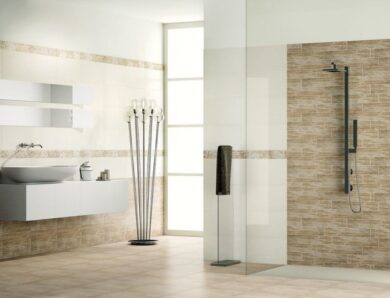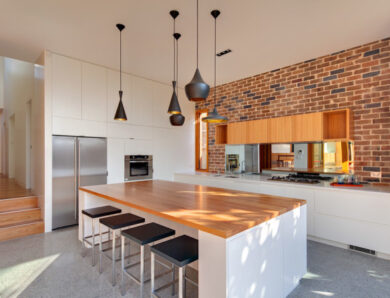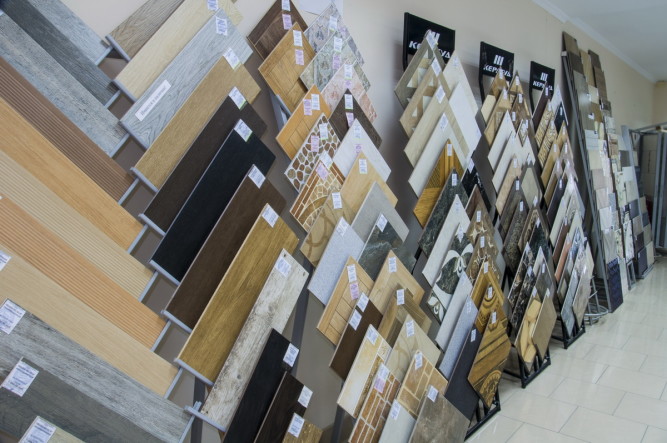Options for laying paving slabs: schemes and methods
Different options for laying paving slabs allow you to create unusual patterns and improve the perception of the outdoor area or path. Thanks to the variety of colors and shapes of materials, you get the opportunity to create unique compositions. If you do not want to rely solely on your own imagination, you can use already prepared schemes and choose the most suitable option for your yard.
From paving slabs you can lay out a picture of almost any complexity
see tiles
Schemes of laying paving slabs differ primarily in that, that completely different elements can be used to create them. Among such finishing material it is possible to meet practically any products. The most popular varieties today are:
- brick;
- rhombus;
- wave;
- Gzhelka;
- honeycombs;
- etc.
The most popular types of paving slabs
It provides the most options for laying paving slabs, apparently, diamond shape. Thanks to such a tile it is possible to create an unusual visual effect, up to 3D images.
Different types of products can be combined in one scheme. This is especially evident, if the design of the sidewalk involves the creation of a certain ornament or pattern. In this case, large and small elements are in progress, differing in shape and design.
The color of the tile is of great importance. Standard products are gray. Coloring pigments can be used to give an extra shade, various mineral additives and oxides, which are added to the raw mixture at the stage of tile production. If we take the example of the tile "diamond", by combining three shades in a certain sequence, you can display three-dimensional shapes.
The most popular schemes
The specific scheme of laying paving slabs depends on the type of materials used, their color and accessible to the territory. The design of the track or site should be organically combined with the overall style of the site. In order to have a more specific idea of the possible variants of the compositions should consider the most popular schemes:
- Chaotic placement. This is a universal solution, which is especially relevant when using paving, stone or tile of any shape and size. This scheme is especially good for garden paths.
- With an offset. This is a standard design. You can use almost any type of tile. The main condition is the placement of joints in the run.
- Tree. The elements are arranged as follows, to form successive wedges, forming a pattern.
- Network. The effect of wicker textures is created by placing the elements at right angles to each other.
- Chess. Formed by using at least two colors.
- Circular pattern. Mainly used for paving. The use of different-sized elements of several colors allows you to create an interesting design for the site.
- Geometric composition. Based on a combination of different colored materials to create a pattern: zig Zag, squares, waves, rhombus, etc.. D.
- Picture. Drawings, created by laying a paving slab, require patience and certain skills, as well as carefully designed schemes.
The most popular schemes of laying different types of paving slabs
How to choose a layout option
Consider certain types of paving tiles should take into account other factors, which determine the overall design of the site. To make the track or playground look organic and aesthetic, you need to compare their dimensions, materials available for processing, registration of the house and the adjoining territory. The simplest scheme always remains the optimum decision at selection of design of laying for paving slabs.. If you want to make some interesting notes, then consider options for combining shapes and shades. For each type of material, depending on its shape, there are some of the most traditional layouts.
Simple schemes of laying rectangular paving slabs using different colors
To create a unique design using compositions in the form of drawings. In this case, you need to have some basic skills, to do the job without serious mistakes. The following finishing models will be excellent materials for work, like cobblestones, rhombus or brick. The rhombus deserves special attention, as with its help it is possible to create an interesting abstract composition or to lay out the present drawing on the earth. It also looks great in neutral schemes, creating an unobtrusive ripple. The more the diamond differs in color from each other, the stronger the similar effect will be expressed.
Methods of fixing elements
In addition to design schemes, there is another issue, which should be decided at the stage of planning the improvement of the territory. We are talking about methods of fixing products on the surface. Ways of laying paving slabs can be divided into three main categories:
- Sand. The easiest and cheapest way. The tile is laid on a thick layer of leveled sand, delving into it on 2/3 and more. In the absence of limiters in the form of curbs, such masonry may shift over time.
- Sand + cement. Similar to the previous method, but dry cement is added to the sand. Upon contact with water, the mixture hardens and binds all the elements together.
- Solution. The most reliable and durable way. The tile is mounted on glue or ordinary mortar on the principle, similar to the technology of laying ordinary tiles.
Methods of fixing the elements of paving slabs
The use of sand-cement cushion is the most commonly used method, as thanks to such combination of components it is possible to fix a tile on a surface without special efforts. It will be much easier to delete individual fragments in the future, than in the case of using a complete solution.
To better understand, which design is more suitable for your site, draw the most successful in advance, in your opinion, options on paper or in a computer program. Visual assessment will allow you to choose the perfect way and make some adjustments in a timely manner.



